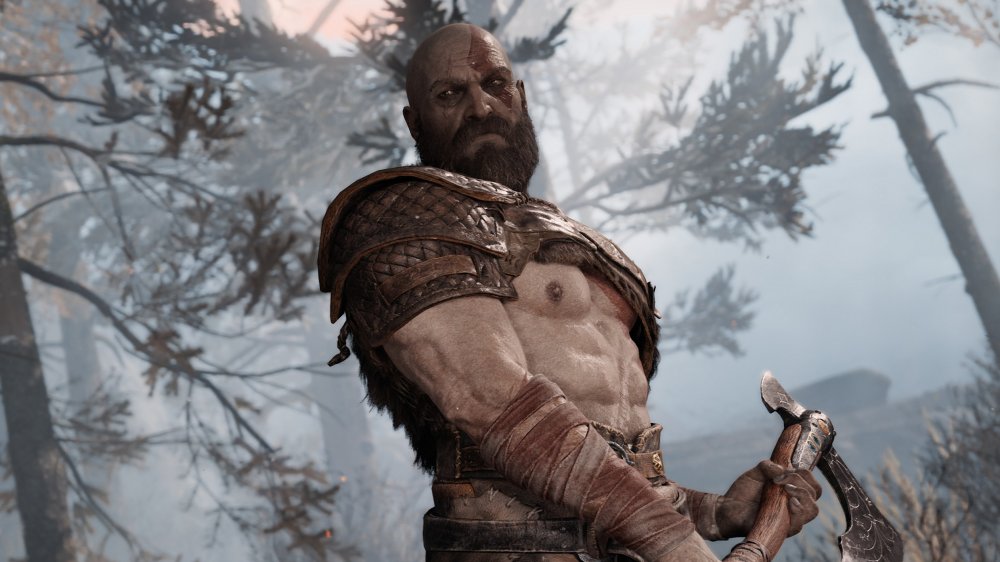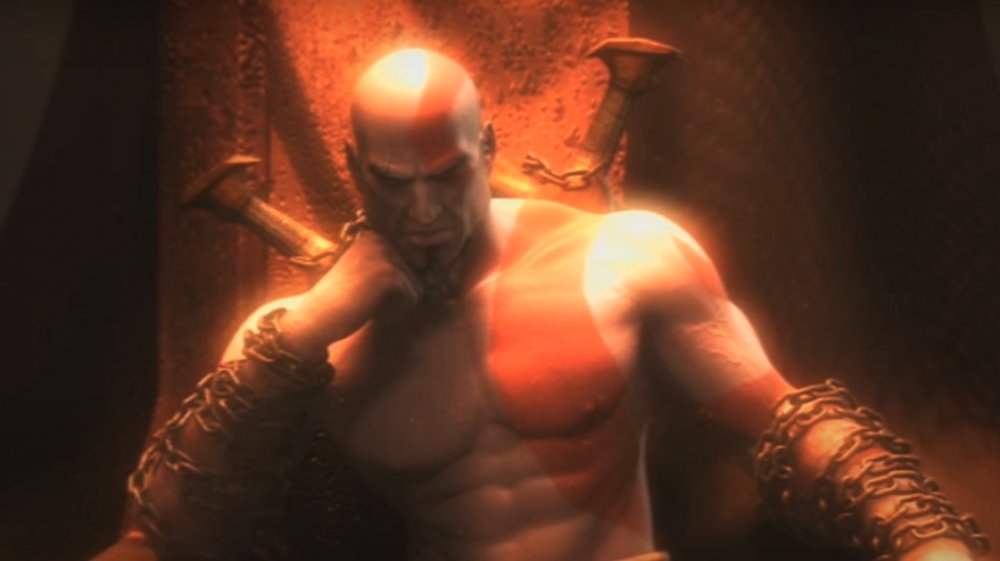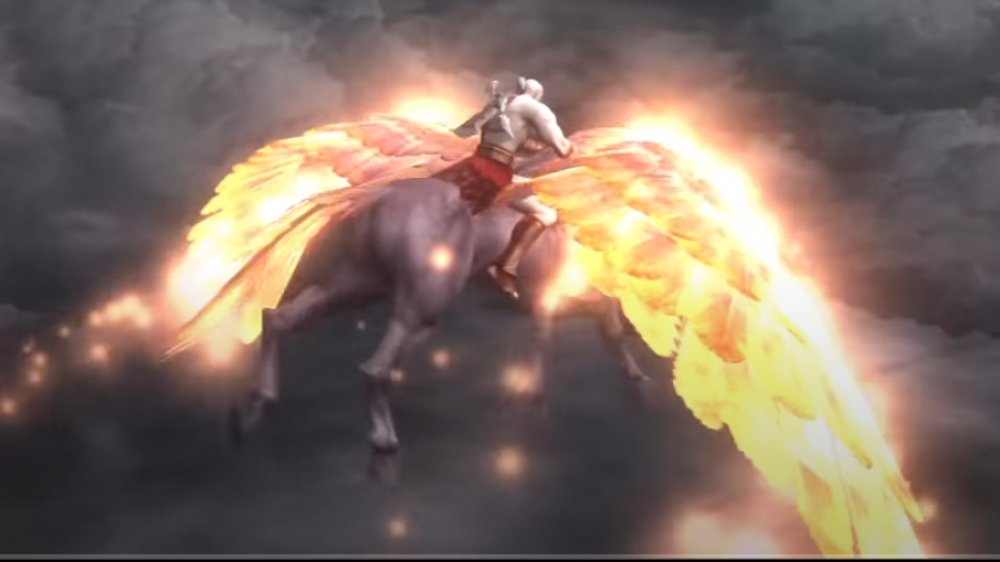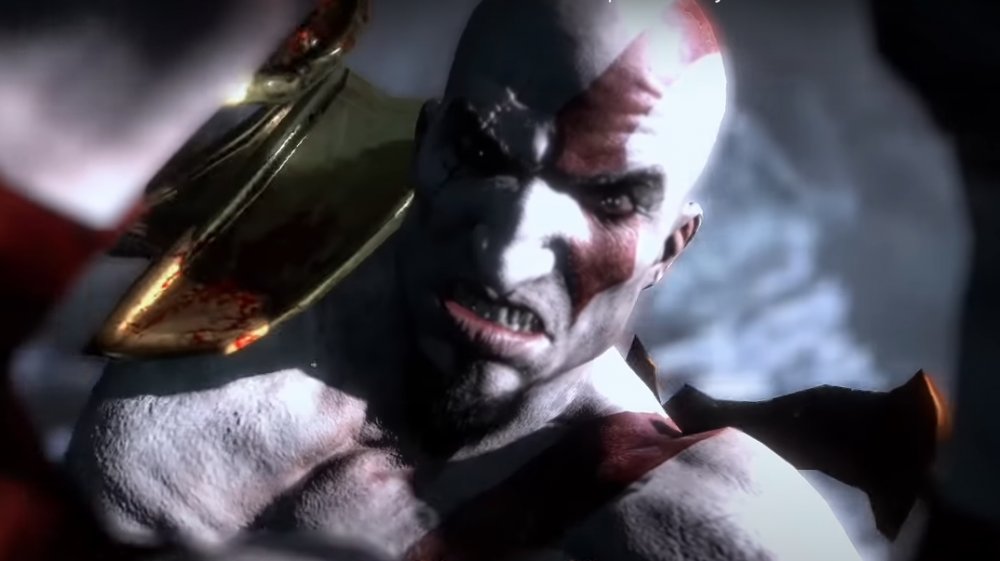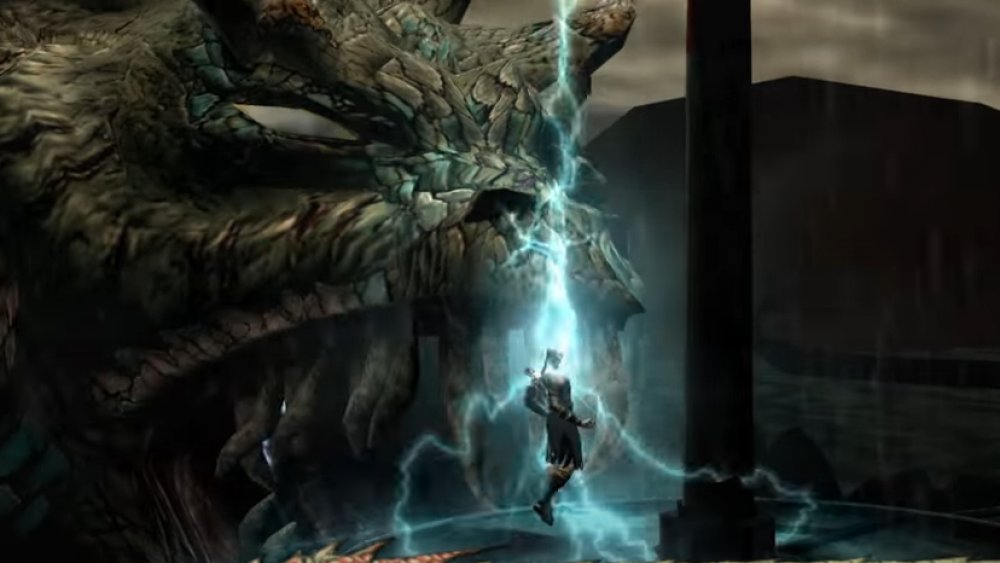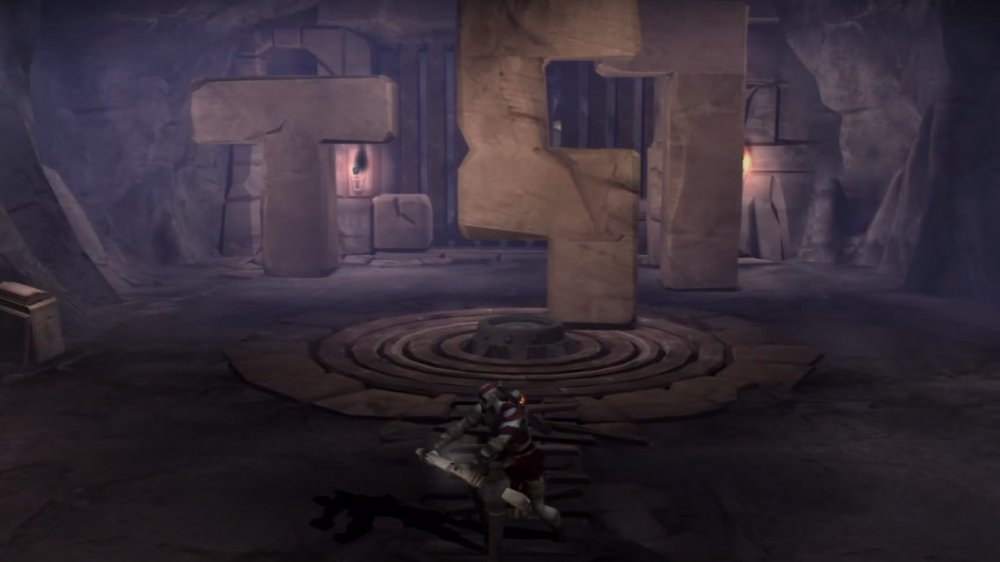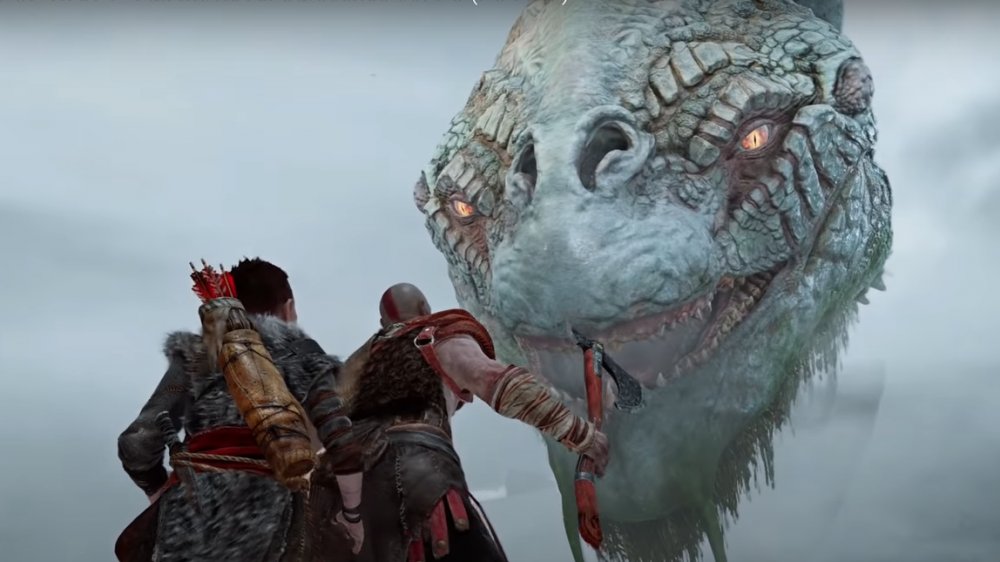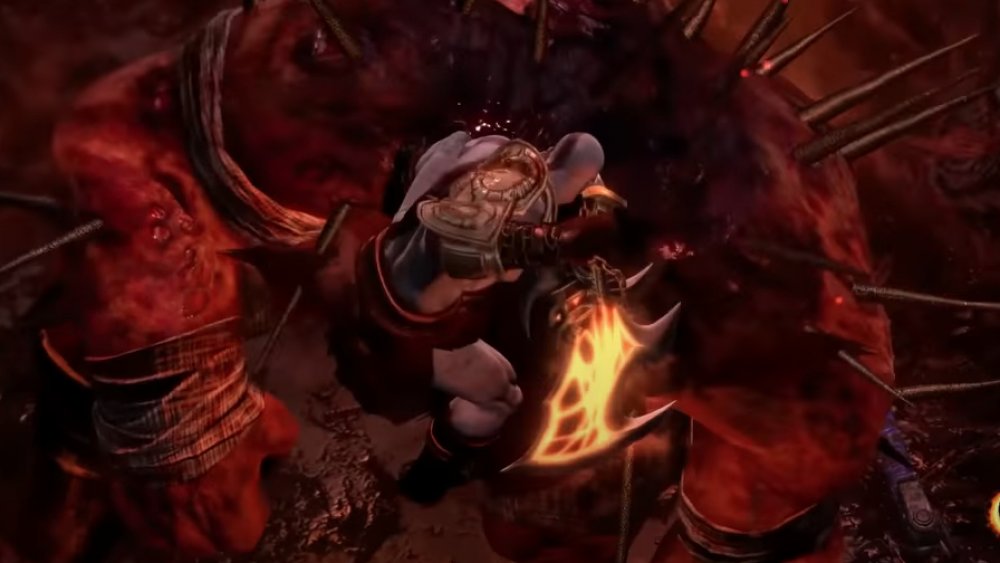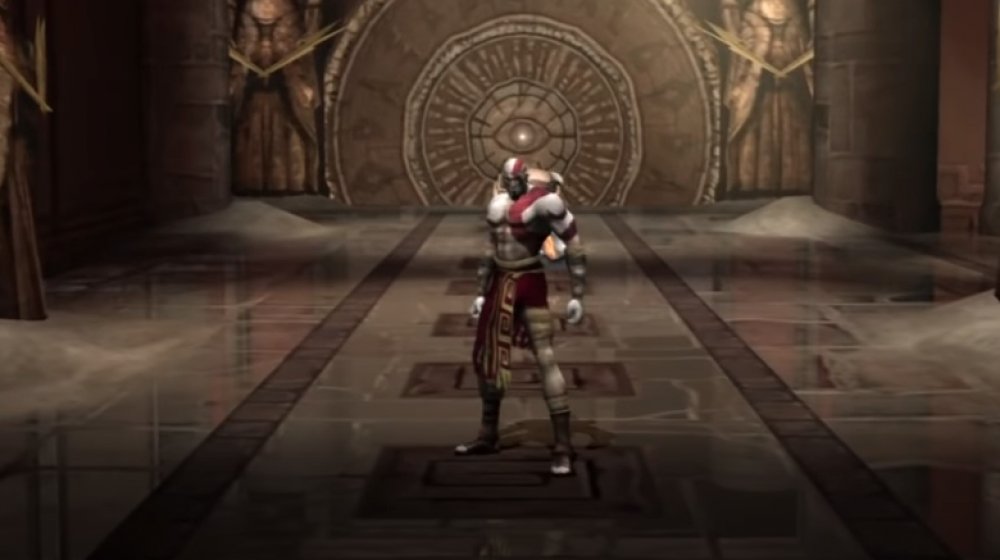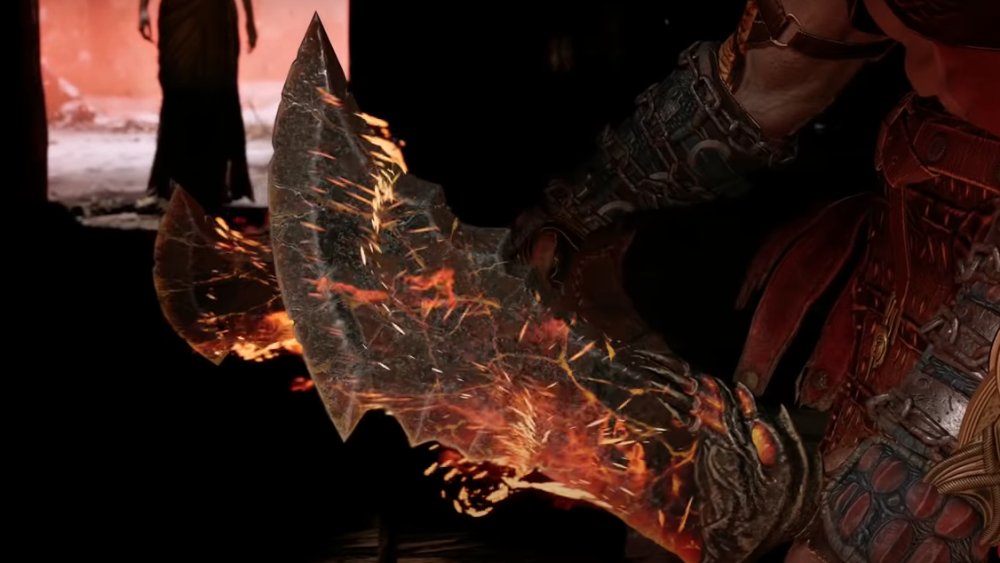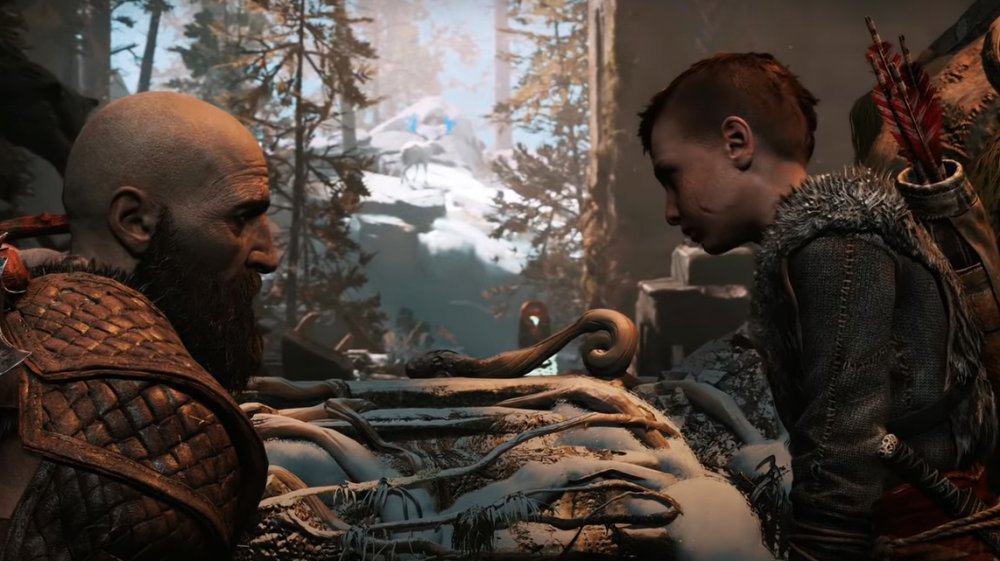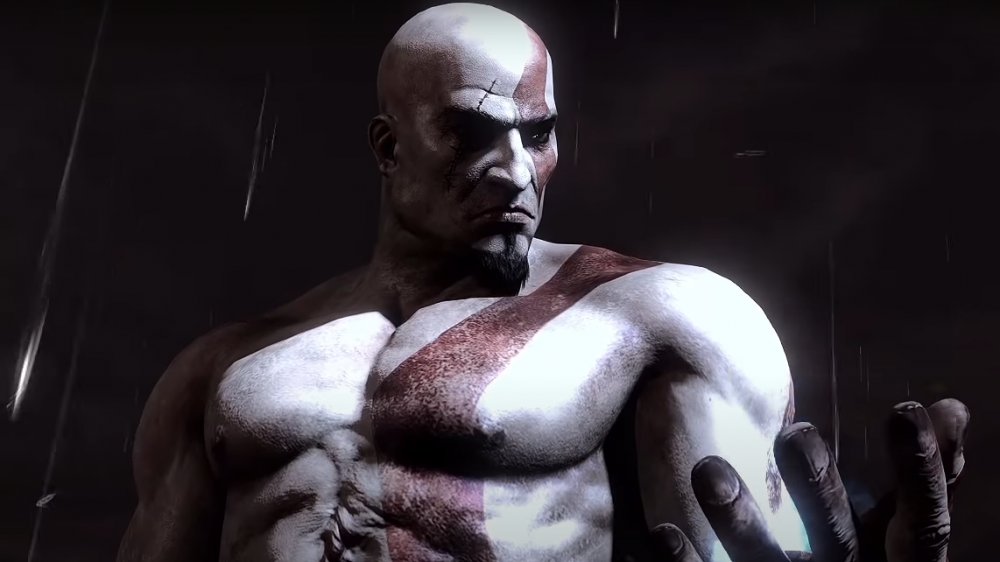Rules Every God Of War Game Has To Follow
Tales of Greek mythology have fascinated people for thousands of years. From Clash of the Titans to Homer's Odyssey, these stories have fueled many an imagination with images of mighty gods, legendary creatures, and heroic deeds. So when creator David Jaffe set out to make a video game franchise inspired by these famous myths, it's no surprise that franchise — God of War – became a huge hit.
It wasn't just the source material that helped God of War find success, though. These action-adventure games use a fast-paced and intricate battle system, brain-teasing puzzles, and vibrant graphics that give players an entertaining experience along with a captivating storyline. They've also built up an iconic character in Kratos, the Ghost of Sparta, whose tragic backstory fuels his rage-driven actions, and gives players the opportunity to vent their own anger issues with the mashing of buttons.
In every entry, God of War's designers have followed a strict set of guidelines to ensure the games accomplish what they set out to do. Here are the rules every God of War game has to follow.
They're not sequels, but a continuation of the story
While it's true that you could finish the first God of War game and feel a sense of completion, Kratos's story was far from over — in fact, it was only the beginning.
The first game ends with Kratos overthrowing the destructive Ares and taking his place on the throne, raising himself to god status. It's no surprise that the first game's popularity certainly warranted a sequel, but for the creators of the franchise, there was always a plan to move the story forward.
According to game director Cory Barlog and creator David Jaffe in a video interview with IGN, God of War 2 was really more like the "second act" of Kratos' journey. In fact, they didn't even want to call it God of War 2, but decided to put the number in the title to avoid confusion.
Kratos's story was meant to be an odyssey of epic proportions — one that couldn't be told in only one game. With the announcement of the next God of War, set to release in 2021, who can say how much farther the Ghost of Sparta's journey will take him?
Make the gameplay a cinematic experience
There's nothing more anticlimactic than eviscerating an army of undead baddies, then having to wait for a long cinematic to play before jumping back into the action. Cutscenes in games have been a staple for decades, but one of the things God of War director Cory Barlog wanted to change was to put the player into the action, instead of having them stand by and watch.
In God of War 2, Kratos mounts the mythical Pegasus and flies off into the air towards Olympus, the home of the gods. This could have been just a short cutscene, but instead Barlog insisted that the player be able to play out the scene, controlling Pegasus's flight all while fighting off other flying enemies.
In the same vein, the opening of God of War 3 has Kratos clinging to the back of Gaia as the titan army climbs its way up Mt. Olympus, all the while fighting off a number of various enemy obstacles. Being immersed in the action is just one of the things that makes a God of War game so fun to play.
Make Kratos as "badass" as possible
It should go without saying that with a title like God of War, the protagonist isn't going to be filled with inherent goodness and mercy. After all, Kratos is a Spartan, a true warrior who was trained all his life for one purpose: to kill.
According to director Cory Barlog, the term "badass" was thrown around a lot during development. Barlog stated that during the making of the first God of War, whenever creator David Jaffe was asked by staff members about the character of Kratos, Jaffe's response was, "He's badass! He's [...] this brutal warrior who has an agenda [and] this single focus of revenge."
In an interview with IGN in 2012, Jaffe stated that the purpose of Kratos's savage fighting style is to allow the player to unleash their "inner beast." So if someone has had a bad day, they can come home and vent their frustrations with the help of Kratos by impaling, decapitating, and even ripping enemies in half. As far as anger management goes, it might not be the healthiest form of therapy. Then again, Kratos never had the luxury of seeing a shrink for his issues.
Give the players freedom to fight their own way
The God of War games offer a battle system that allows players to implement a variety of fighting styles. Kratos has a number of weapons at his disposal throughout the series: blades, a hammer, a spear, and an ax, among others. There are also magical abilities that Kratos can acquire in the games, either by completing quests or by finding artifacts.
During an interview with IGN back in 2012, David Jaffe explained the reason for God of War's diverse battle choices. "We want players to discover their own style when it comes to taking out the bad guys," Jaffe said. "There's a MACRO system which gives players the choice between straight up combat, using magic attacks, and/or calling upon mini-games to kill the enemy."
The advantages to such a battle system, besides the freedom of choice, is that the player can benefit depending on how they take out an enemy. Jaffe goes on to describe how certain attacks can either provide health for the player, or can shower them with power-ups. There are also attacks Kratos can use that, when combined with magic abilities, can result in some pretty cool kills.
All the puzzles must be unique
The frequent puzzles in the God of War series have become a familiar (albeit frustrating at times) staple. While not everyone loves puzzles, the refreshing thing about those in God of War is that they are never boring.
Speaking with IGN, Jaffe stated the importance of making each puzzle in the game feel unique. "Some of the puzzles are designed to fit within the story, some of the puzzles are designed to shine a light on Kratos's personality," he said. "But they are all designed to feel fresh and unique when you happen upon them."
Some puzzles are fairly simple, like weighing down a pressure plate or turning a crank. Others are quite complex, and even a bit disturbing. One such puzzle from God of War 3 forces Kratos to sacrifice an innocent woman in order to open a door and move forward in the level. Most likely this type of puzzle was meant to reflect Kratos' ruthless manner rather than to "fit the story." Either way, it certainly is unique.
Mythology is a blueprint, not a bible
It's common knowledge that God of War borrows a lot from mythology. There are the Greek and Norse gods, the minotaur, Pegasus, cyclopes, sea serpents, and other various characters and creatures which came from the world of ancient lore.
Yet the creators of the God of War series admit that they don't strictly follow the rules of the mythos. Creator David Jaffe said to IGN that while he drew inspiration from reading mythology, they did not take "historical" accuracy into account. "We've taken the coolest aspects of the subject and written a story around those elements," Jaffe said. "... God of War feels like a Greek myth, just not any Greek myth you've ever read before."
When director Cory Barlog reimagined God of War for 2018, he decided to freshen up the franchise by adding Norse mythology into the mix. He did point out, however, the liberties some creators take when it comes to adapting a story from ancient myth. In an interview with Playstation Lifestyle, Barlog mentioned Marvel's interpretation of the character Thor. "[Marvel depicts Thor as] the hunky hero . . .Thor in the myth is a jerk."
Ask the question: "What would Kratos do?"
The God of War franchise thrives on its use of gory battle sequences and brutal violence — the fact is it just isn't a God of War game without the "war." But during the development stages, the games' producers were insistent that the designers were not to input carnage for carnage's sake.
With the release of God of War III, Steve Caterson, the senior producer of Sony Santa Monica at the time, was asked about the violent content in the games. According to Caterson, the development team was given a strict guideline to follow when implementing the games' grisly battle system: "Don't do anything that doesn't fit the character."
"Don't do anything just to be controversial," Caterson said. "There should be a purpose and a reason for the actions and the depictions shown on-screen." Caterson went on to say that whenever game designers were met with the opportunity to up the blood ante with the improvement of game graphics, the team had to ask themselves whether or not it would be in line with the character. If it wasn't, it was thrown out.
Create an environment that changes with your actions
While traversing the varied settings in a God of War game, Kratos may come across something that looks interesting, but with no seeming purpose. Whether it's a door that won't open, an obstacle blocking the path, or a mysterious statue, it's almost guaranteed that Kratos will have to keep searching before he can utilize these objects.
The maze-like environments in God of War challenge players to really scour their surroundings. Pandora's Temple in the first game is a perfect example, which game director Barlog cited during an interview with Venture Beat in 2019, calling these types of environments "hubs."
The temple is round, and the halls are made up of concentric circles which Kratos must navigate. But some rooms are hidden, including underwater chambers which first need to be drained before they can be explored. There are also cranks which spin the circular hallways in order to unlock the way forward.
"Create a large-scale hub that fundamentally changes each time you come back, that was actually a giant device that you have to figure out once you realize, 'Oh my gosh, that is all connected,'" Barlog explained.
There's no God of War without the Blades of Chaos
Kratos's iconic weapon is featured in each of the God of War games. Two fiery swords attached to the ends of a long chain, the Blades use both long and short range attacks to decimate Kratos's enemies. However, the Blades of Chaos are not only a deadly tool; they are the shackles that bound Kratos into the service of Ares, and a reminder of the sway which the gods hold over him.
When the new God of War was released in 2018, Cory Barlog chose to draw out the fans' anticipation by delaying the appearance of the Blades until halfway through the game. Instead, Kratos wielded the Leviathan Axe for the first part of the game, a weapon with abilities similar to those of Mjolnir, the hammer of Norse god Thor.
In an interview with Gaming Bolt, Barlog said, "I wanted the Blades to come late in the game, so that you really adjust to the [axe], and I wanted them to come in right after the point where you gave up hope on them showing up in the new game at all."
Kratos is no hero, but he's more human than you think
It's been well-established that Kratos is a character fueled by rage — a man with a singular focus who will destroy anything and anyone who gets in the way of his revenge. While his quest for vengeance might be justifiable, his barbaric actions are hardly worthy of the term "hero."
Over the course of three games, Kratos sliced, crushed, and tore his way through the guilty and innocent alike, having no care for the trail of bodies he left behind, nor any regret. It wasn't until 2018's reimagined God of War that the games' creators chose to show a different side of the Spartan warrior — specifically, his paternal side.
Cory Barlog, once again taking the helm as the game's director, told Playstation Lifestyle that he wanted to challenge players' perspective of Kratos, and what they thought they knew about the character. With Kratos' son Artreus at his side, Barlog wanted to focus on the character's efforts to put his past behind him. "[Kratos] has a struggle like all of us," said Barlog. "Change is not easy, and true change takes time."
Give players an adventure they'll never forget
Since the very first God of War game was released in 2005, the goal of its creators was always to tell an epic story. While some may think of the games as mere gorefests, it's the fast-paced battle systems, creative puzzles, mosaic environments, and visually stunning cinematic sequences help make the God of War series truly memorable.
Impulse Gamer interviewed Cory Barlog and lead level designer Rob Davis in 2018 to discuss the newest God of War game. When asked about the changes in the game, Barlog replied, "God of War has always had this mixture. This action-adventure element, puzzle solving and combat all in one sort of package, which is very cinematic."
It was important to Barlog that the games provided a realm of imagination for players to truly immerse themselves in. "For me, the success of the game is when you reach the end, you cannot possibly believe the journey and how far you've travelled." As the God of War series moves forward, it will be compelling to see where Kratos's journey takes us next.

